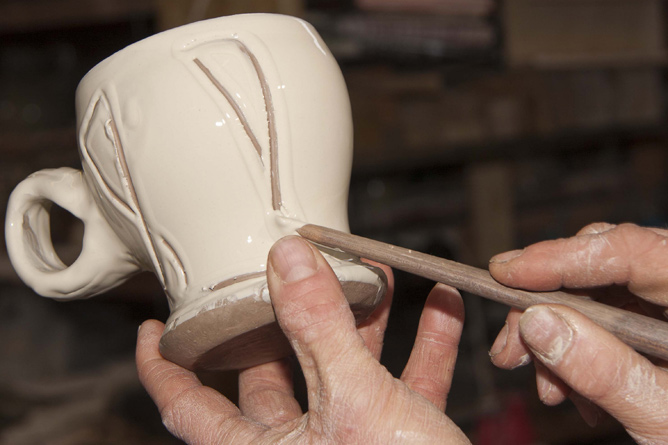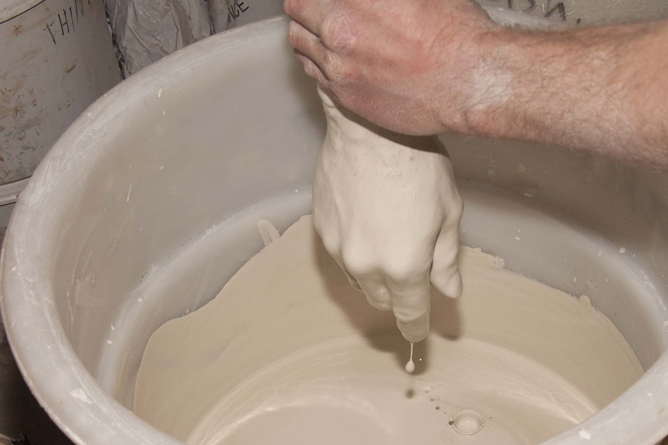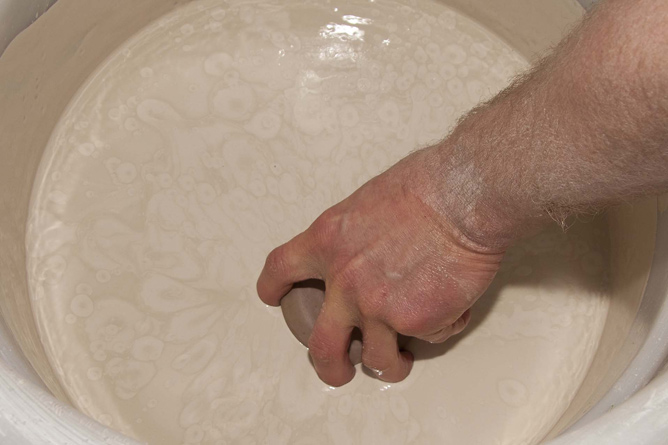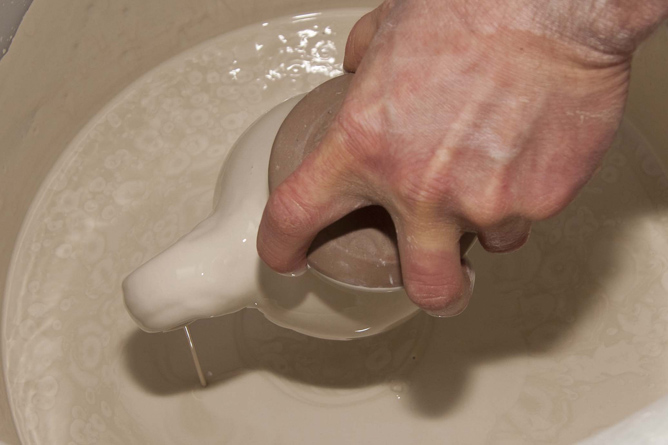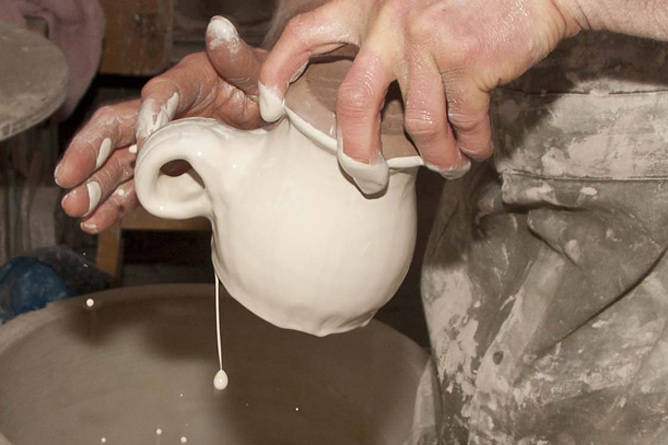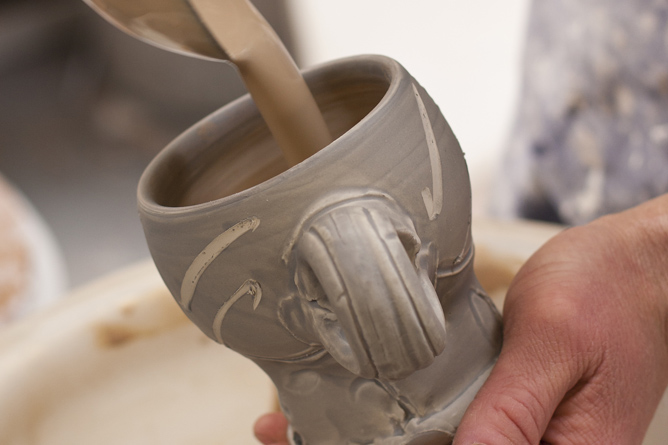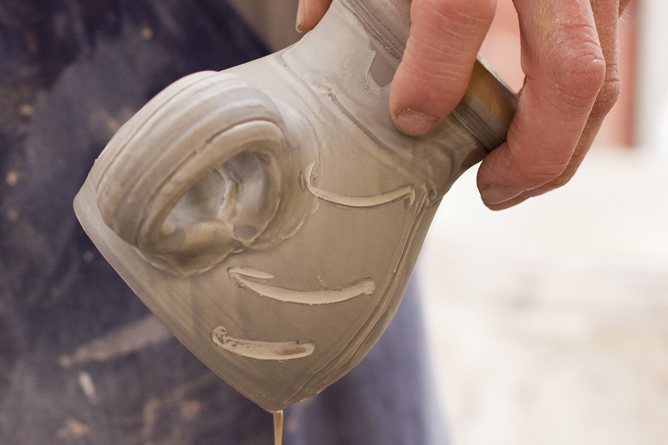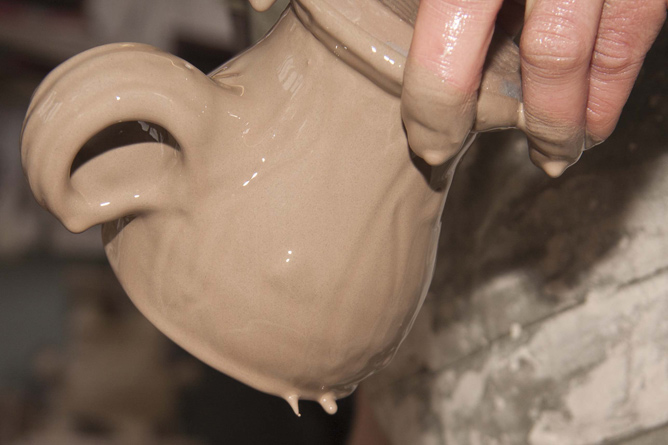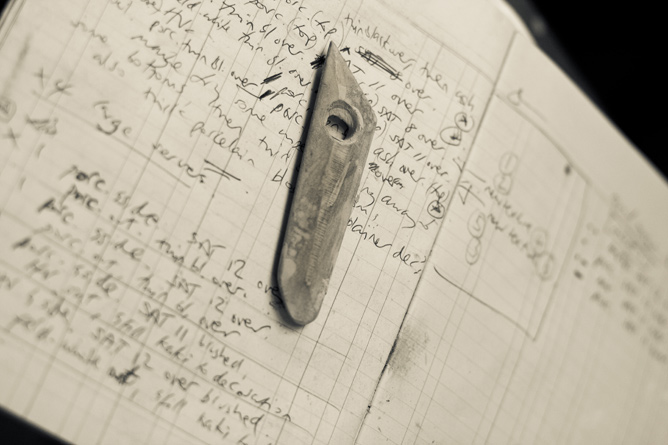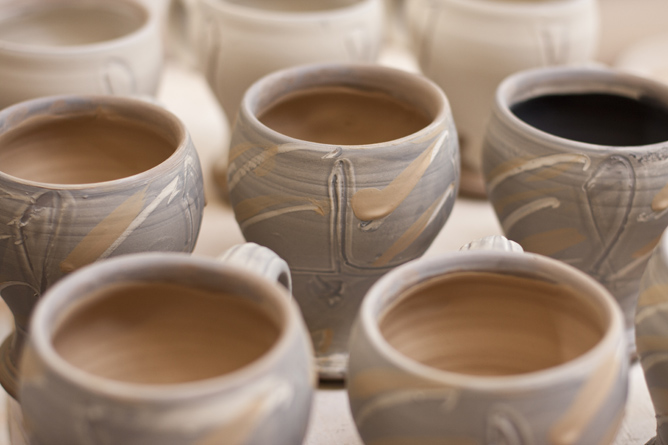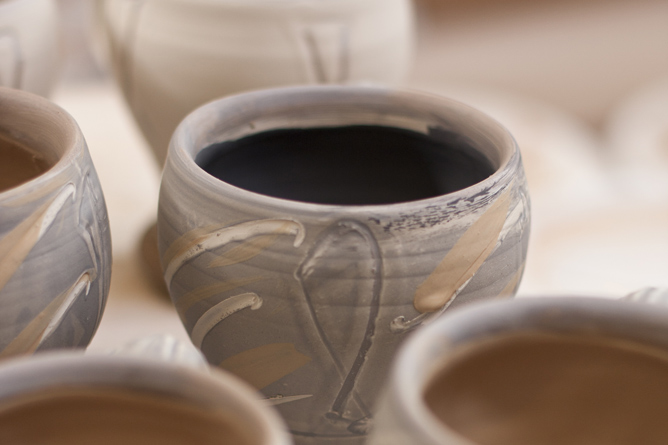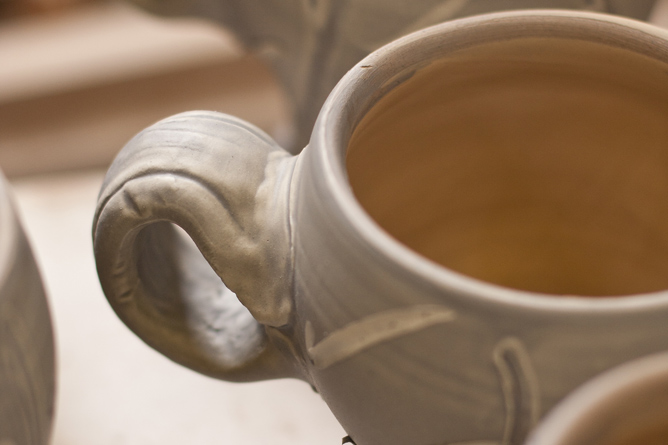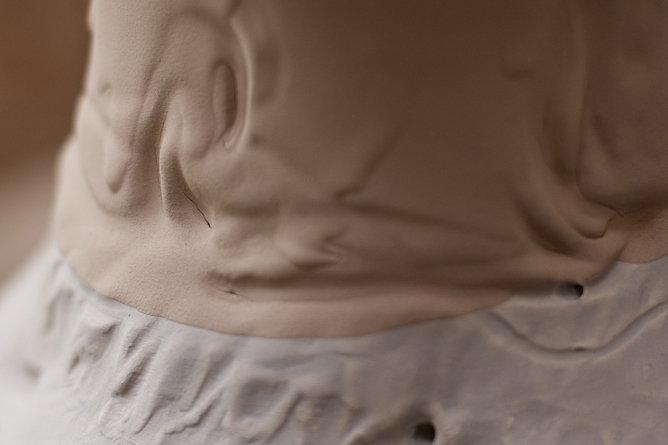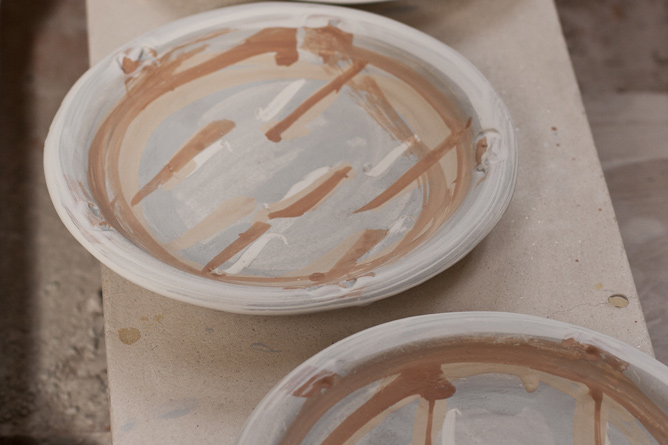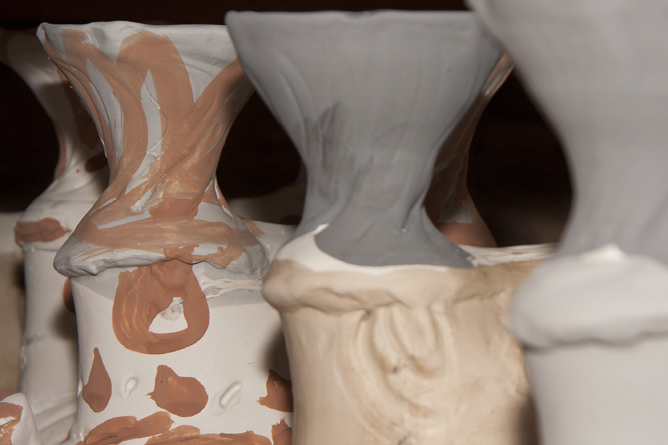Slip & glaze
Almost more than clay itself, it was the plain raw slips and glazes and the creative potential they offered, along with their transformation in firing, which first really captured my imagination for the subject. Submerging a full armful of the gorgeous stuff is only the beginning; thick, creamy and smooth, the slip is stirred and paddled to ensure an even liquid suspension before it’s use. In common with generations of artistic endeavour before us, we find the development of these materials in our hands, lends us the freedom to run with new ideas.
My finest enjoyment in using slip is in it’s wet state. Finger-wiping and wet scragfitto, marks and motifs evolve to describe and punctuate the undulating forms of different pots. A certain immediacy of process as well as repetition, provokes fresh ideas.
Raw-glazes often incorporate various home-dug or collected materials, wood ashes, surface clays and granite dust for example. I can only explain this curiosity for found ingredients as something primal. It is time-consuming work that requires persistence to achieve satisfying results. The outcome however, is immensely satisfying and unique. Despite the frequently simple composition of recipe, these slips and glazes, in combination with the process of wood-fired salt-glaze, underpin a limitless wealth of creative possibilities and sophisticated fired surfaces.
